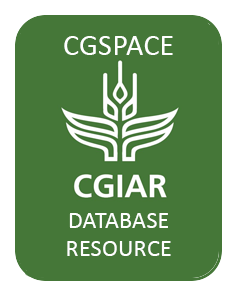Pathways towards resilient urban food systems
Food systems are facing unprecedented challenges from multiple shocks and stresses, including climate events, pandemics, geopolitical events, and economic crises. People, assets and infrastructures throughout supply chains are vulnerable to the impacts, and the consequences for food and nutrition security, livelihoods and economic development, and social equity can be dramatic.
Higher livestock abortion burden in arid and semi-arid lands, Kenya, 2019-2020
Tracking livestock abortion patterns over time and across factors such as species and agroecological zones (AEZs) could inform policies to mitigate disease emergence, zoonoses risk, and reproductive losses. We conducted a year-long population-based active surveillance of livestock abortion between 2019 and 2020, in administrative areas covering 52% of Kenya's landmass and home to 50% of Kenya's livestock. Surveillance sites were randomly selected to represent all AEZs in the country.
“It doesn’t matter at all—we are familyâ€: Titling and joint property rights in Myanmar
Many policy makers and academics striving for more gender equality consider joint property rights as preferable over sole rights, since the latter often discriminate against women. Several governments in low-, middle- and high-income countries have therefore imposed joint rights through modifications of statutory law or mandatory joint property registration.
Strengthening capacity, incentives and institutions for food safety in Ethiopia: Training of food business inspectors from the Addis Ababa City Administration
The International Livestock Research Institute (ILRI) is implementing a food safety project, Strengthening Capacity, Incentives and Institutions for Food Safety in Ethiopia (SCIIFS), aimed at improving the capacity of food safety regulators. As part of this project, on 11 October 2023, ILRI organized a workshop for food inspectors from the Addis Ababa City Administration Food and Drug Authority (AAFDA) to train them on food safety, food inspection, foodborne hazards, and elements that support food safety interventions.
Interprovincial food trade aggravates China’s land scarcity
Land is an increasingly scarce resource that plays a critical role in achieving many Sustainable Development Goals (SDGs). Land scarcity, namely the imbalance state between cropland availability and demand, can be mitigated by the trade of agricultural products, but how effective it is remains unclear. Here, by integrating grid-level data on cropland into multi-regional input–output analysis, this paper accounts for the scarce land footprint and virtual scarce land flows within China at a 1 km × 1 km resolution.
CGIAR Initiative on Livestock and Climate: Plan of Results and Budget 2024 (PORB) Planning
High public good values for ecosystem service attributes of on-farm quinoa diversity conservation in Peru
Agrobiodiversity is associated with a range of important but poorly quantified public good ecosystem services, the conservation of which requires public support. With a view to determining the general public’s willingness to pay (WTP) for such conservation, we organised interviews with 491 adult Peruvian residents in three regions a stated preference choice experiment (CE) to elicit the value they place on crop genetic resources conservation, using quinoa cultivation as a case study.
Diverse pathways for climate resilience in marine fishery systems
Both the ecological and social dimensions of fisheries are being affected by climate change. As a result, policymakers, managers, scientists and fishing communities are seeking guidance on how to holistically build resilience to climate change. Numerous studies have highlighted key attributes of resilience in fisheries, yet concrete examples that explicitly link these attributes to social-ecological outcomes are lacking. To better understand climate resilience, we assembled 18 case studies spanning ecological, socio-economic, governance and geographic contexts.
Evaluating rural household well-being and empowerment among women and young farmers in Senegal
This article provides a description of baseline survey data that was collected in Senegal in the regions of Sedhiou and Tambacounda in 2020, respectively, and as part of an agricultural development project aimed at improving the well-being and resilience of farming households. The survey was implemented using a structured questionnaire administered among 1503 households, 70% of whom are women and 30% are young people, in the two regions.
Strengthening groundwater governance in Pakistan
Pakistan is highly dependent on irrigated agriculture for employment, income generation and food security—around 90 percent of all food production relies on either surface or groundwater irrigation. The growing dependence of agriculture but also industries and the drinking water sector on groundwater has led to the overexploitation of groundwater resources and, in some areas, to the deterioration of groundwater quality. Fiscal incentives for solarization of irrigation/drinking water pumps are likely to further increase water withdrawals and make water governance more complex.

